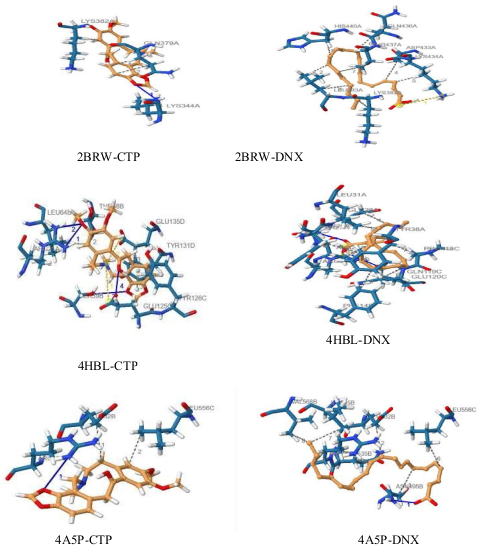Chemical and bioprotective studies of Xylopia aethiopica seed extract and molecular docking of doconexent and cryptopinone as the prominent compounds
Keywords:
Xylopia aethiopica, Phytochemicals, Antioxidants, Antibacterials, Molecular dockingAbstract
Fourteen phytochemical compounds were identified in the gas chromatography/mass spectrometry (GC/MS) analysis of the petroleum ether extract of the seeds of Xylopia aethiopica. The compounds comprised of terpenoids (56.027 %), unsaturated fatty acids (30.081 %), alcohol (9.385 %) and saturated fatty acid (4.507 %). The extract showed high antioxidant activity in a dose dependent pattern at a minimum and maximum concentrations of 25 and 400 μg/ml respectively and could be compared with that of ascorbic acid used as a standard antioxidant agent. The antibacterial activity screening of the extract against five pathogenic bacteria organisms indicated that the extract possessed more antibacterial activity than gentamicin used as a standard antibacterial agent. The trend of activity was Klebsiella pneumoniae (gram-negative) > Shigella flexneri (gram-negative) > Staphylococcus epidermidis (gram-positive) > Escherichia coli (gram-negative) > Streptococcus pneumoniae (gram-positive). The presence of high amount of terpenoids in the extract of X. aethiopica could be the reason for the high antioxidant and antibacterial activities shown by the extract and also suggests why the seed extract of the plant is used in herbal medicine for the treatment of diseases and infections. All of the test compounds had negative binding affinities, according to molecular docking modelling, indicating that the compounds had been successfully docked to the receptors. The compounds showed good pharmacokinetic properties, such as high blood-brain barrier absorption, oral bioavailability, and water solubility, in the in-silico ADME and drug-likeness predictions. The findings of this study significantly increase the relevance of these compounds as promising first targets for the treatment of drug resistant bacteria. This may help pharmacologists and other medicinal chemists create and synthesize even more potent drug candidates.

Published
How to Cite
Issue
Section
Copyright (c) 2024 O. U. Igwe, C. C. Oru, I. E. Otuokere

This work is licensed under a Creative Commons Attribution 4.0 International License.



